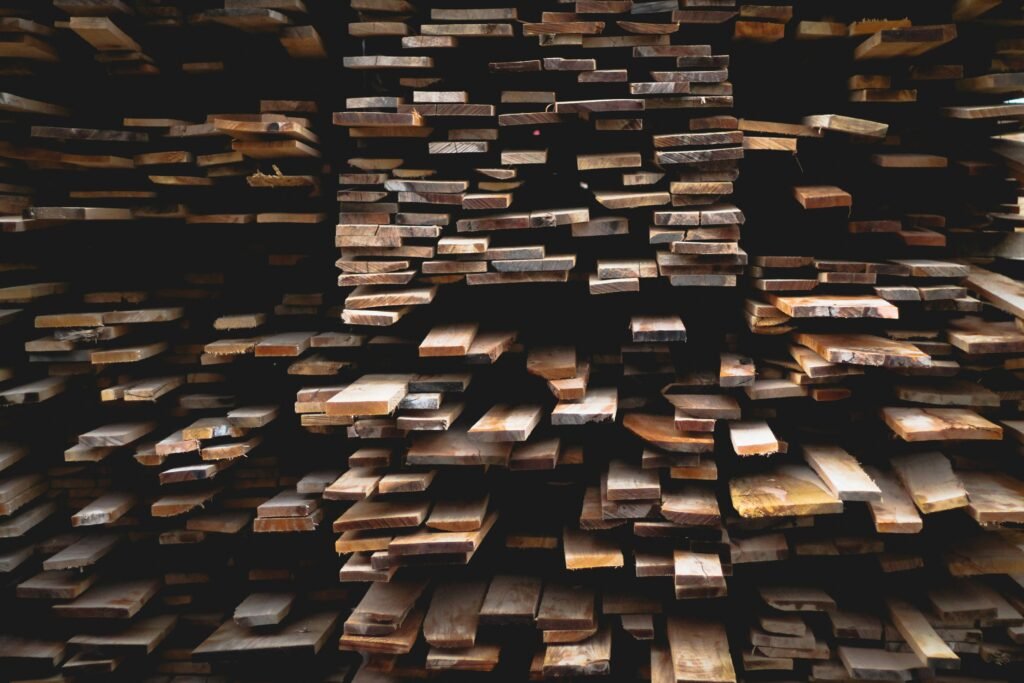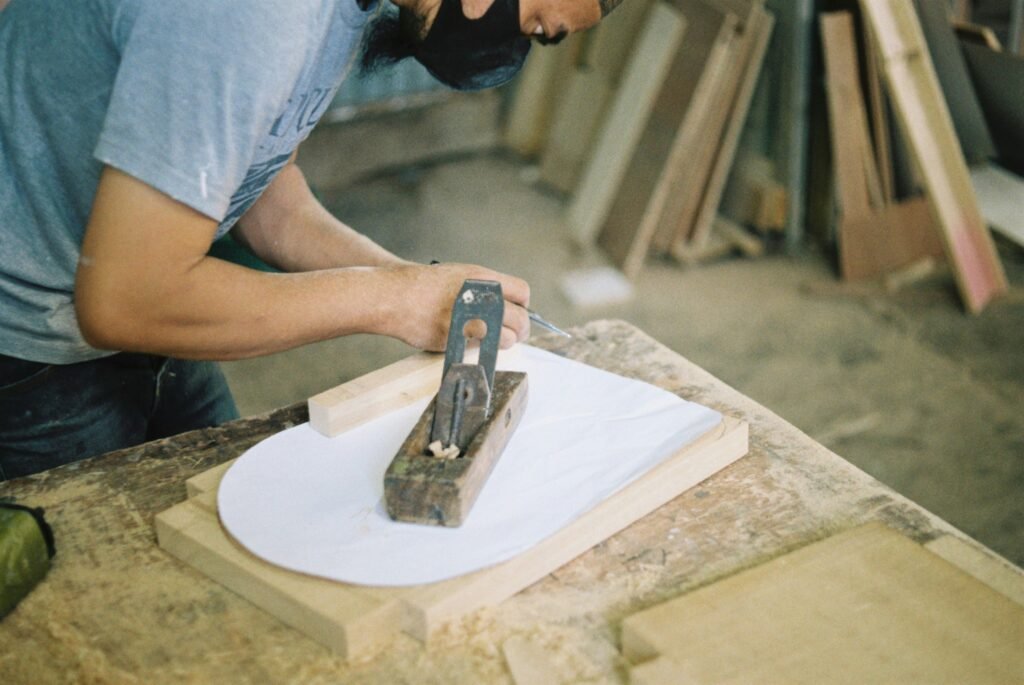Choosing the appropriate type of wood for outdoor furniture is crucial for ensuring its longevity, aesthetic appeal, and functionality. The right wood selection plays a pivotal role in how well the furniture endures various environmental challenges. Outdoor furniture is subject to conditions such as moisture, UV exposure, and pests, which can significantly affect its performance and appearance over time.
Durability is one of the paramount considerations when selecting wood for outdoor furniture. Different types of wood possess varying levels of resistance to rot, decay, and insect infestations. For example, hardwoods like teak and mahogany are renowned for their impressive durability and ability to withstand harsh weather conditions. In contrast, softer woods may require more frequent maintenance and protective treatments, making them less ideal for long-term outdoor use.
Aesthetics is another significant aspect of wood selection. Different wood species have unique colors, grains, and textures that can either complement or detract from the overall design of outdoor spaces. A carefully chosen wood can enhance the visual appeal of a patio or garden, creating a cohesive and inviting environment. It’s essential to consider how the wood’s natural characteristics will blend with other materials in the outdoor area.
Moreover, the overall functionality of outdoor furniture is intimately linked to the type of wood selected. Certain woods can provide added comfort and usability, ensuring that the furniture remains not only visually appealing but also practical for everyday use. Consequently, understanding the benefits and drawbacks of various wood types is crucial for making informed decisions.
In summary, selecting the right wood for outdoor furniture is vital for achieving durability, aesthetic appeal, and functionality. The unique challenges posed by outdoor conditions make it imperative to carefully evaluate wood options to ensure they meet the demands of the environment.
Key Factors to Consider When Choosing Wood
When selecting wood for outdoor furniture, various factors significantly influence the decision-making process. Primarily, moisture resistance stands out as a pivotal characteristic since outdoor furniture is exposed to varying weather conditions, including rain and humidity. Certain types of wood, such as teak and cedar, possess natural oils that make them less susceptible to water damage, thus enhancing their longevity. These moisture-resistant woods minimize the risk of warping, cracking, and decay, ensuring that outdoor pieces maintain their structural integrity over time.
Insect repellent qualities are another crucial consideration when choosing wood for outdoor applications. Wood such as mahogany and cedar not only boasts an appealing aesthetic but also contains natural compounds that deter insects like termites and ants. This inherent resistance contributes significantly to the durability of outdoor furniture, reducing the need for additional treatments or maintenance. Selecting wood with these properties can ultimately lead to a cost-effective investment, as it lessens repair and replacement expenses associated with insect damage.
The natural durability of wood is also vital in determining its suitability for outdoor use. Species known for their strength and resilience, such as oak and ipe, offer exceptional performance under the strain of outdoor conditions. These woods are less likely to splinter or wear down, making them ideal for high-traffic areas or pieces that see frequent use. Furthermore, durability extends the lifespan of outdoor furniture, promoting sustainability by reducing waste linked to frequent replacements.
In summary, when choosing wood for outdoor furniture, it is essential to prioritize moisture resistance, insect repellent qualities, and natural durability. By focusing on these key factors, consumers can make informed decisions that enhance the longevity and functionality of their outdoor living spaces.
Teak: The Gold Standard for Outdoor Furniture
Teak wood has long been recognized as one of the premier materials for outdoor furniture, often referred to as the gold standard. This elevation in status is attributed to several intrinsic properties that make it exceptionally suitable for outdoor use. One of the most notable features of teak is its high content of natural oils, which imbue the wood with remarkable moisture resistance. These oils serve a dual purpose: they not only prevent water absorption but also act as a natural deterrent against pests, such as termites and other wood-boring insects. Consequently, teak furniture is less prone to decay, which is a significant concern in outdoor environments.
Furthermore, teak’s durability is unparalleled. It can withstand a variety of climates, from extreme heat to heavy rainfall, without compromising its structural integrity. Unlike many other types of wood, teak does not warp, crack, or split when exposed to changing weather conditions over time. This resilience is one of the key reasons homeowners and commercial establishments alike opt for teak when investing in outdoor furnishings, as it ensures long-term functionality and minimal upkeep.
Aesthetically, teak wood is highly sought after for its rich golden-brown hue that develops a beautiful silver-gray patina over time if left untreated. This evolving appearance allows teak furniture to effortlessly blend into various landscaping and architectural styles, enhancing the outdoor space’s overall appeal. However, it is essential to note that the ethical sourcing of teak has become a pertinent issue. Responsible consumers should seek products certified by organizations such as the Forest Stewardship Council (FSC), ensuring that the teak wood has been harvested sustainably. It’s also worth considering the cost, as while teak furniture generally comes at a premium, the long-term benefits and reduced maintenance requirements often justify the initial investment.
Cedar: Lightweight and Aromatic Option
Cedar wood is renowned for its unique characteristics, making it a favored choice for outdoor furniture. One of its standout features is its lightweight structure, which not only facilitates ease of mobility but also contributes to a more versatile design. The lightness of cedar does not compromise its durability; rather, it enhances its practicality, allowing homeowners to rearrange and reposition their furniture with minimal effort. Moreover, cedar possesses a remarkable natural resistance to decay and insect damage. This innate trait is particularly beneficial for outdoor applications, as it ensures that the furniture can withstand adverse weather conditions and resist the challenges posed by pests.
The aromatic qualities of cedar are another compelling aspect. The wood emits a pleasant, natural scent, which can add a refreshing ambiance to outdoor spaces. This aroma is not just delightful; it is also a natural repellent for certain insects, further bolstering the material’s longevity and efficacy for outdoor use. As such, cedar becomes more than just a functional element; its sensory attributes can enhance the overall outdoor living experience.
To maximize cedar’s potential, it is advisable to treat or finish the wood. Applying a protective sealant can significantly improve its weather resistance, allowing for longer life and maintaining its aesthetic appeal. Regular maintenance with suitable oils or stains can further enhance cedar’s natural beauty while fortifying it against the elements. Whether used for patio furniture, garden benches, or decorative elements, cedar wood proves to be an ideal choice. Its lightweight nature, resistance to decay and insects, along with its aromatic quality, solidify its status as a preferred material for outdoor furniture.
Eucalyptus: Sustainable and Beautiful
Eucalyptus wood has garnered significant attention in the field of outdoor furniture due to its remarkable combination of sustainability and aesthetic appeal. This timber is sourced predominantly from fast-growing eucalyptus trees, which allows for effective harvesting practices that are environmentally friendly. Eucalyptus forests are known for their ability to regenerate quickly, making them a responsible choice for consumers and manufacturers alike.
One of the defining attributes of eucalyptus wood is its natural beauty. The wood features a rich grain and a warm hue, which can enhance the overall look of outdoor spaces. Its versatility in design allows for a range of styles, from modern minimalism to rustic charm. When treated appropriately, eucalyptus can maintain its striking appearance for years, making it an attractive option for discerning homeowners.
Another compelling reason to choose eucalyptus for outdoor furniture is its resistance to moisture and pests. This wood possesses inherent oils that provide a natural barrier against decay and bug infestations, ensuring longevity even in challenging outdoor environments. As a result, eucalyptus furniture can withstand the rigors of varying weather conditions, contributing to a more sustainable investment over time.
Maintaining eucalyptus furniture requires minimal effort. Regular cleaning with a mild soap solution and the application of wood oil can help preserve its rich color and protect it from the elements. While eucalyptus does not demand the same level of care as traditional options like teak or cedar, understanding its specific maintenance needs is essential for longevity. In comparison, teak requires oiling and tends to weather to a silver gray, while cedar naturally repels insects but may require more frequent treatments against moisture. Ultimately, eucalyptus serves as a stunning, sustainable alternative that does not compromise on functionality or style.
Other Wood Types to Consider
When selecting wood for outdoor furniture, it is essential to consider a range of options beyond the typical choices like teak and cedar. Acacia, for example, is gaining popularity due to its appealing aesthetics and durability. This hardwood features a rich, warm hue and a natural resistance to water, making it suitable for outdoor applications. Acacia furniture generally requires minimal maintenance, as its oil content helps shield it against the elements. Regular cleaning and occasional oiling can preserve its appearance and longevity, ensuring it remains a striking addition to any patio or garden.
Mahogany is another excellent choice for outdoor furniture. Known for its deep reddish-brown color and smooth grain, mahogany not only contributes elegance but also provides resistance to decay and insects. Although it is less common than some other woods, mahogany’s stability and strength make it ideal for outdoor settings. However, it often requires a protective finish or sealant to combat the effects of sun exposure and moisture, which can fade its color over time. With proper care, mahogany can maintain its beauty for many years.
Pine is often overlooked but can be a practical option for budget-conscious consumers. As a softer wood, it is not as durable as other hardwoods; however, treated pine offers reasonable resistance against the elements. It typically has a lighter color, making it easier to blend with various styles. Regular maintenance, including applying wood preservatives and protective coatings, is crucial to extend the lifespan of pine furniture. Overall, while each wood type has its unique characteristics, understanding these options can significantly broaden your choices when selecting outdoor furniture.
Maintenance Tips for Outdoor Wooden Furniture
Maintaining outdoor wooden furniture is essential for prolonging its lifespan and preserving its aesthetic appeal. One of the fundamental aspects of care involves regular cleaning. Depending on the level of exposure to the elements, it is advisable to clean the furniture every few months. Use a mixture of mild soap and water to wipe down surfaces, then rinse thoroughly with water to remove any soap residue. This practice will help prevent the build-up of dirt and grime, which can degrade the wood over time.
Another significant maintenance task is sealing and staining the wood. Most outdoor woods, particularly those naturally resistant to decay like teak and cedar, benefit from an application of sealant or wood stain. This not only highlights the natural beauty of the wood but also provides a protective layer against moisture and UV rays. Ideally, furniture should be stained every one to two years, but it is crucial to follow the manufacturer’s instructions to ensure optimal results.
During harsh weather conditions, such as winter or heavy rain, it is important to store outdoor furniture properly. Consider using protective covers designed for outdoor wooden furniture or, when possible, relocate the pieces to a sheltered area, such as a garage or shed. This will help shield the wood from excessive moisture and harsh temperature fluctuations, which can lead to warping or cracking.
Regular inspections of the furniture are also paramount. Check for signs of wear, such as splintering, cracking, or loose joints, and address these issues promptly to prevent further damage. Applying a wood conditioner or using wood filler for minor repairs can help maintain the integrity of the furniture. By implementing these maintenance tips, the longevity and visual quality of outdoor wooden furniture can be significantly enhanced.
Treating and Preserving Outdoor Wood
Properly treating and preserving outdoor wood is vital to ensure its longevity, maintaining both its structural integrity and aesthetic appeal. Various treatments, such as oils, stains, and sealants, can significantly enhance the durability of outdoor furniture. Each treatment serves a distinct purpose; thus, selecting the right type is crucial for effective preservation.
Wood oils, such as teak or linseed oil, penetrate deep into the wood, nourishing it while providing a layer of water resistance. To apply, begin by cleaning the surface thoroughly, using a damp cloth to eliminate any dust or debris. Once dry, pour a small amount of oil onto a soft rag, then apply it in long, even strokes following the wood grain. Allow the oil to soak for about 10-15 minutes, then wipe off any excess to prevent a sticky residue. It is advisable to reapply oil every six months for optimal protection.
Stains are ideal for those who wish to enhance the color of their outdoor furniture. After surface preparation, including sanding and cleaning, apply a wood stain using a brush, ensuring even coverage. Allow the stain to sit according to the manufacturer’s instructions before wiping off the excess. Regular maintenance, ideally every one to two years, will keep the color vibrant and the wood protected from UV rays and moisture.
Sealants work as a barrier against harsh weather conditions and insect infestations. A clear sealant can be applied after staining or oil treatment to create a protective layer. Application should follow the product’s instructions, typically involving a two-coat process. For the best results, it is recommended to check the sealant integrity annually and reapply as necessary, ensuring continued protection against the elements.
Conclusion and Final Thoughts
Choosing the right wood for outdoor furniture is a crucial decision that significantly impacts both the aesthetic appeal and longevity of your outdoor spaces. Throughout this guide, we have explored various types of wood, each with distinct characteristics that make them suitable for outdoor applications. From durable hardwoods such as teak and eucalyptus to more affordable options like pine and cedar, understanding their benefits and drawbacks is essential for making an informed choice.
The environment in which the furniture will be placed also plays a vital role in determining the most suitable wood. Factors such as exposure to moisture, sunlight, and temperature fluctuations can influence how different types of wood perform over time. For instance, while teak is renowned for its weather resistance, softer woods may require regular maintenance to protect against decay and UV damage. Thus, assessing the specific conditions of your outdoor space can guide you in selecting the most resilient wood.
Furthermore, considering how you plan to use the furniture is equally important. If you expect heavy usage, opting for harder woods can provide the necessary strength and stability. Alternatively, if your outdoor furniture will mainly serve a decorative purpose, lighter woods may suffice. Regardless of the choice made, it is important to prioritize quality to ensure that your investment lasts.
In conclusion, selecting the appropriate wood for outdoor furniture not only enhances the beauty of outdoor areas but also ensures durability and functionality over time. Take your time to reflect on the options available, match them to your usage and environment, and don’t hesitate to consider both aesthetics and practicality. With thoughtful selection, you can create beautiful and enduring outdoor spaces that offer comfort and style for years to come.



